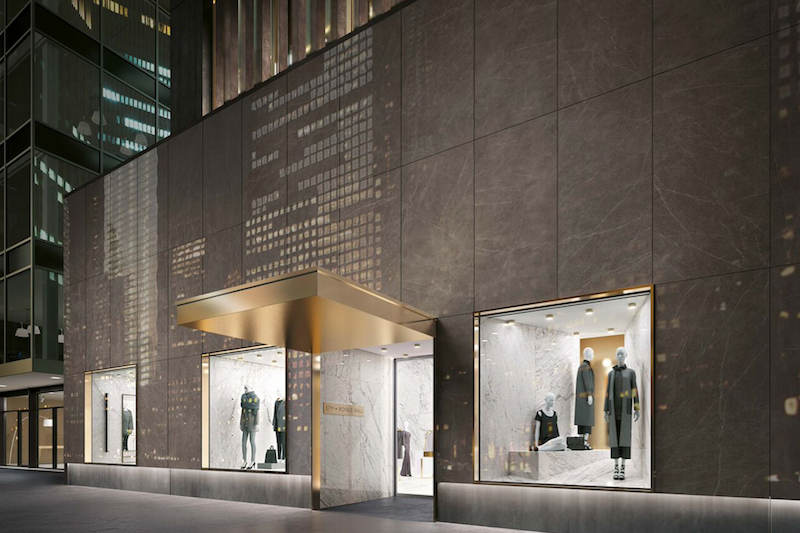Cersaie, the world’s largest exhibition of ceramic tile and bathroom furnishings, was held in Bologna, Italy this past September and, now, Ceramics of Italy has taken what they saw on display at the show and created a list of the top 10 tile trends to watch as we head into 2017. The diverse list includes a multitude of colors, textures, and finishes. Scroll down to view the complete list.
Against the grain
 Pictured: Pastorelli - Komi
Pictured: Pastorelli - Komi
Wood continues to serve as a major muse for the tile industry, with companies adding their own twist and utilizing new production methods to create a whole new typology of floor and wall covering. Some are inspired by exotic woods, offering a beautiful, sustainable alternative to rare hardwoods such as Kauri while others recreate the warmth and imperfections of wood in 2cm outdoor pavers, large thin slabs, kaleidoscopic patterns and three-dimensional tiles that are virtually impossible to achieve with real timber.
Bits & Pieces
 Pictured: Fap - Maku
Pictured: Fap - Maku
Many companies are introducing collections characterized by a random assortment of fragmented pieces, lending an eclectic and playful visual narrative to the surface. Some of the designs are inspired by natural stone with a conglomerate look such as Ceppo di Gré while others convey a sense of manual processing such as Venetian terrazzo and irregular stone mosaics.
Black & Blue
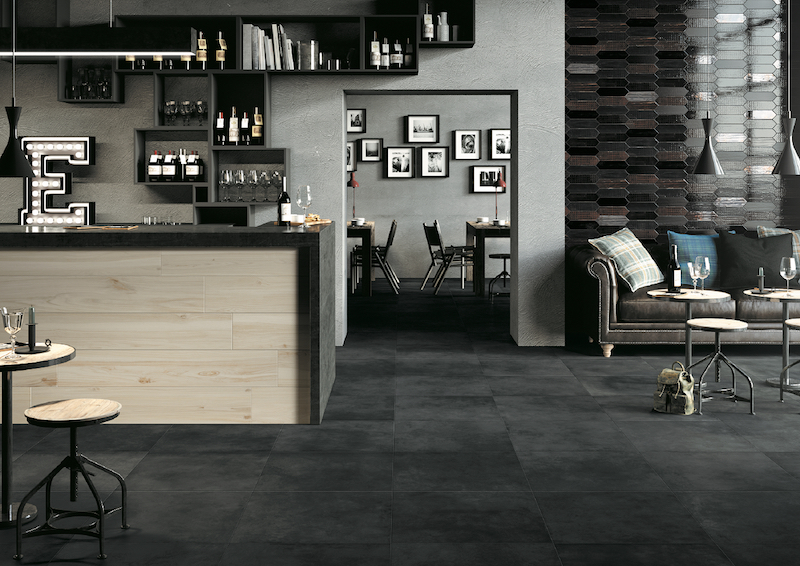 PIctured: Mirage - Reve
PIctured: Mirage - Reve
While black is always in style, intense blacks with matte finishes are making a strong statement this year. Meanwhile, blue – which has been popping up everywhere this year from fall fashion shows to hair color – is taking the tile industry by storm, expanding beyond last year’s marine palette to include dusty, vibrant, and sophisticated hues of blue.
Gritty Chic
 Pictured: Cedit - Archeologie
Pictured: Cedit - Archeologie
Adding an edge to interiors, tile companies continue to experiment with plaster, concrete, metal and resin. Some designs are elegant interpretations of industrial surfaces, offering a kind of raw sophistication, while others are intentionally corroded and weathered, conjuring a romantic notion of the passage of time.
Mega Marble
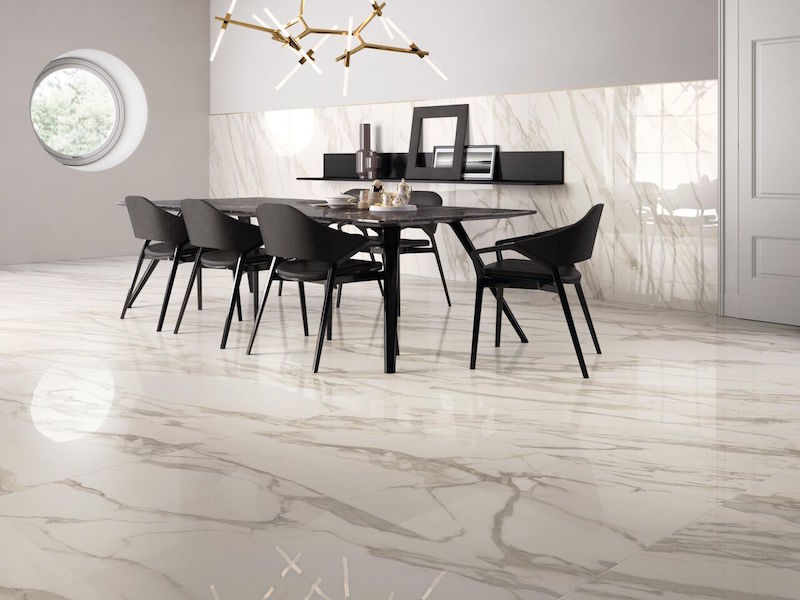 Pictured: Supergres - Purity
Pictured: Supergres - Purity
For designers who love the brilliant look of marble but loathe the headaches associated with it, porcelain tile is a no-brainer. Digital printing has become so advanced that it’s hard to tell whether the material is calacatta or ceramic, even after touching the surface. Being stain, scratch and chemical resistant, it gives clients freedom from fear (especially of red wine) and provides a low maintenance and low cost alternative to the precious material. Companies are producing these wunder objekts in sizes up to 5.25’ x 10.5’ and thicknesses ranging from a typical tile thickness of 10mm for heavy traffic floors to super thin ceramics that can be used to cover doors, furnishings and walls.
Metallics
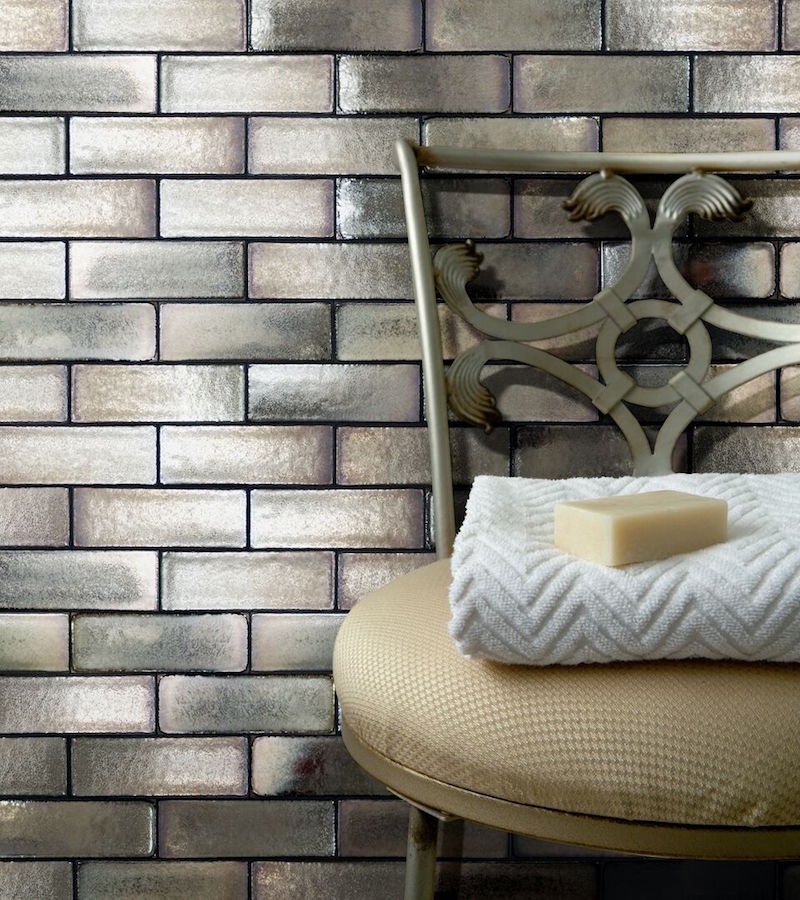 Pictured: Unica - Brique
Pictured: Unica - Brique
With metallics’ growing popularity, beyond product design and into the built environment, it's unsurprising that tile companies are adding more metallics to the mix than ever before. Bronze, platinum and gold are the key players, often acting as inserts or decorative accents, adding a bit of glamour to collections often inspired by natural materials.
Retro Revival
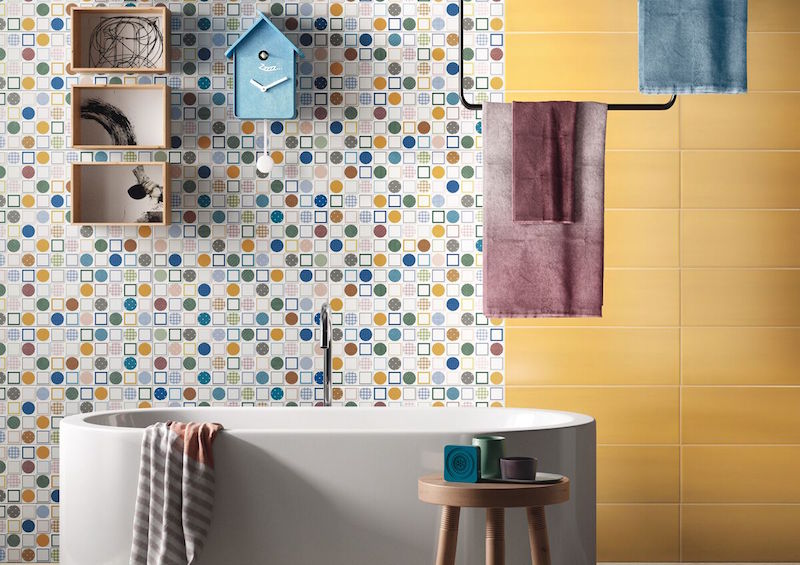 Pictured: Imola - Play
Pictured: Imola - Play
Great designers learn from history, borrowing elements from the past and infusing them with contemporary ideas to create something completely new. Retro is a trend that has been percolating for years, especially with the graphic appeal of cementine and maiolica, but now other historical movements have joined the fold, from the elegance of art deco to the bold shapes and hues of Memphis.
Rustic Modern
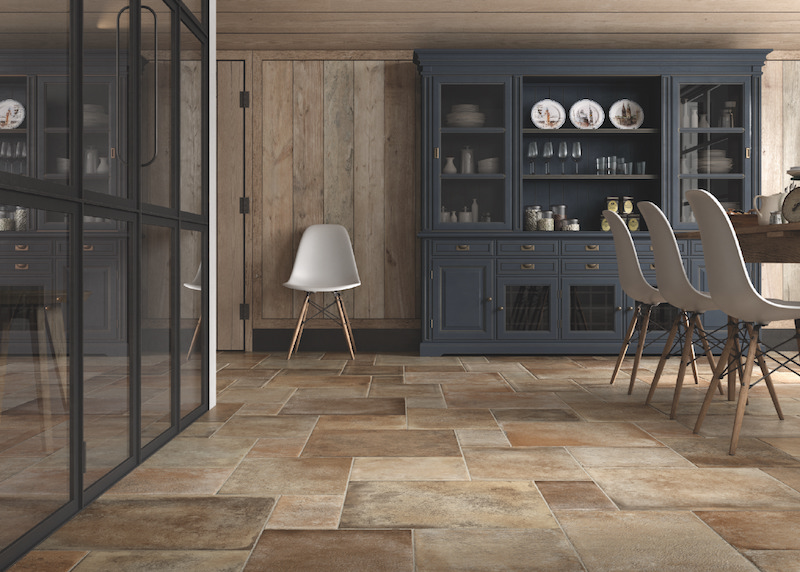 Pictured: Manifattura del Duca - Cotto Med
Pictured: Manifattura del Duca - Cotto Med
Adding a new twist to country style, wood, stone, brick and cotto are invigorated by modern laying schemes, hues and patterns. Antique stone with metallic accents, terracotta in quatrefoil shapes, and geometric patterns overlaid onto distressed wood planks are just a few of the ways tile companies are blending farmhouse charm with modern elegance.
Seamless
 Pictured: Bardelli - Eve
Pictured: Bardelli - Eve
With decorative surfaces undergoing a renaissance, tile offers the perfect solution to create a contemporary fresco, combining the tactile appeal of wallpaper with the durability of ceramic. From large, thin porcelain tile panels and mesh-mounted mosaics to patterns that traverse a single tile's dimensions, Italian manufacturers are giving designers the tools to create a beautifully seamless surface.
Warp & Weft
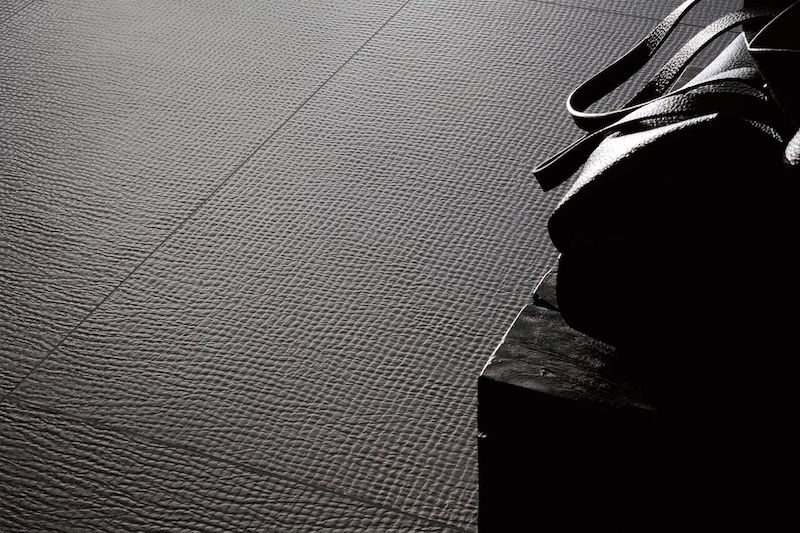 Pictured: Coem - Patchwork
Pictured: Coem - Patchwork
Texture is the defining character of this year’s tile collections, which complements the many new textile inspired lines. Designs range from lace, macramé, linen and madras to masculine suiting fabrics, leather, tweed and tartan. Whether woven, knitted, knotted, or layered, the designs add another tactile element to the hard surface.
Related Stories
| Oct 12, 2010
Holton Career and Resource Center, Durham, N.C.
27th Annual Reconstruction Awards—Special Recognition. Early in the current decade, violence within the community of Northeast Central Durham, N.C., escalated to the point where school safety officers at Holton Junior High School feared for their own safety. The school eventually closed and the property sat vacant for five years.
| Oct 12, 2010
Guardian Building, Detroit, Mich.
27th Annual Reconstruction Awards—Special Recognition. The relocation and consolidation of hundreds of employees from seven departments of Wayne County, Mich., into the historic Guardian Building in downtown Detroit is a refreshing tale of smart government planning and clever financial management that will benefit taxpayers in the economically distressed region for years to come.
| Oct 12, 2010
Gartner Auditorium, Cleveland Museum of Art
27th Annual Reconstruction Awards—Silver Award. Gartner Auditorium was originally designed by Marcel Breuer and completed, in 1971, as part of his Education Wing at the Cleveland Museum of Art. Despite that lofty provenance, the Gartner was never a perfect music venue.
| Oct 11, 2010
HGA wins 25-Year Award from AIA Minnesota
HGA Architects and Engineers won a 25-Year Award from AIA Minnesota for the Willow Lake Laboratory.
| Sep 30, 2010
Luxury hotels lead industry in green accommodations
Results from the American Hotel & Lodging Association’s 2010 Lodging Survey showed that luxury and upper-upscale hotels are most likely to feature green amenities and earn green certifications. Results were tallied from 8,800 respondents, for a very respectable 18% response rate. Questions focused on 14 green-related categories, including allergy-free rooms, water-saving programs, energy management systems, recycling programs, green certification, and green renovation.
| Sep 21, 2010
Forecast: Existing buildings to earn 50% of green building certifications
A new report from Pike Research forecasts that by 2020, nearly half the green building certifications will be for existing buildings—accounting for 25 billion sf. The study, “Green Building Certification Programs,” analyzed current market and regulatory conditions related to green building certification programs, and found that green building remain robust during the recession and that certifications for existing buildings are an increasing area of focus.
| Sep 16, 2010
Gehry’s Santa Monica Place gets a wave of changes
Omniplan, in association with Jerde Partnership, created an updated design for Santa Monica Place, a shopping mall designed by Frank Gehry in 1980.


